For Japanese people, soba is not just a meal, but an important part of their lives that has been enjoyed throughout the seasons.
This website explores the appeal of soba noodles from the perspectives of history, culture, and eating methods.
What is Soba?
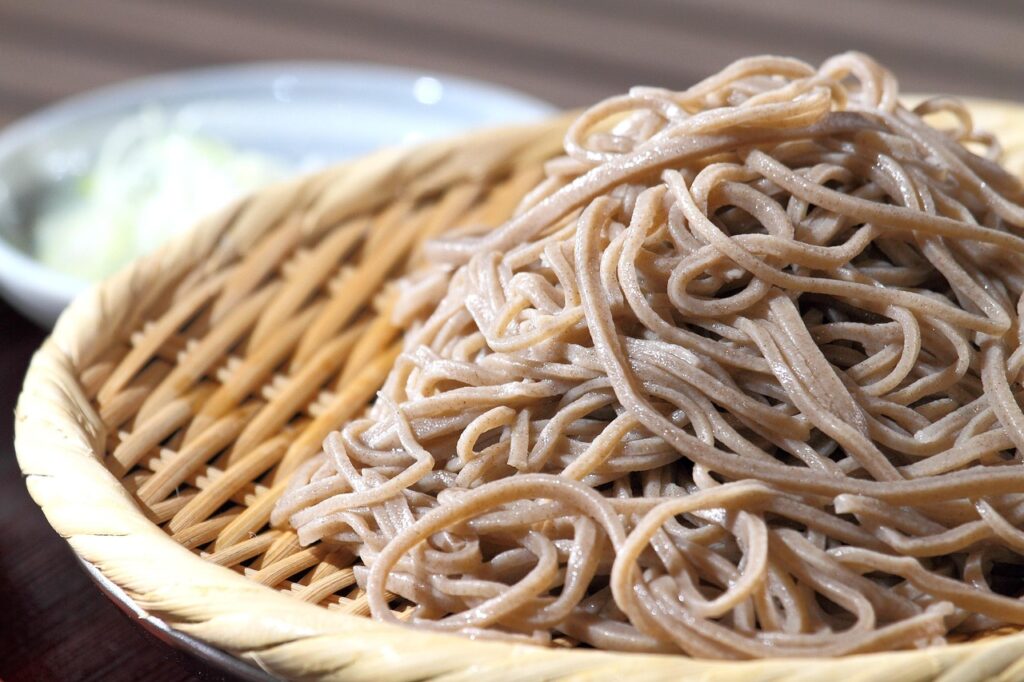
Soba is a traditional Japanese rice noodle dish made from buckwheat flour.
Characterized by its thin, aromatic rice noodles, there are various types and ways to eat soba, such as zaru-soba, which is dipped in broth made from dashi broth, and kake-soba, which is served in warm broth.
It has been loved in Japan since ancient times, and each region has its own unique culture.
TasteTune「Soba」
By the way, everyone, have you heard tastetune's song “Soba”?
The core of tastetune lies in sharing recipes as music to make cooking more accessible and to introduce it to a wider audience.
Here, we introduce the thoughts, expressions, and ingenuity embodied in this music.
Tradition and the Echoes of Nature: A Commitment to Tone
This piece expresses through sound the traditional method of making soba noodles and the natural scenery that surrounds it.
The opening features soft ambient sounds and the delicate resonance of the shakuhachi flute, like wind blowing through a bamboo grove. Over this, the gentle tones of the koto overlap, evoking the movements of a craftsman cutting soba noodles. These sounds enhance the simple, natural beauty inherent in soba.
Handicrafts and Mealtime: Rhythm and Sound Effects
The song also incorporates scenes of eating soba noodles.
The light clink of chopsticks against ceramic bowls is expressed through wooden percussion. Pad sounds evoking the water washing cold soba noodles and the steam rising from warm soba convey the noodles' temperature and texture. This allows listeners to experience the flow of preparing soba and the atmosphere of the moment it's eaten.
A pure and meditative time
Throughout the entire process, we prioritized “purity,” “calmness,” and “a meditative quality.”
Grasping soba noodles with chopsticks, dipping them in broth, and savoring them quietly—we've captured that moment of fulfillment in sound. With each bite, the aroma of soba and the stillness within your heart spread out like waves of sound. This piece is music that celebrates simplicity, tradition, and the comfort found in food.
The World of Soba: Savored Through All Five Senses
This piece aims to be an experience not just heard with the ears, but savored with all five senses.
Close your eyes, and the quiet scene of a soba shop, the craftsman's careful handiwork, even the steam and the refreshing coolness of water will come to life through sound. Please surrender yourself and immerse yourself fully in the world of soba.
History of Soba
Soba has a long history, and its existence in Japan has been confirmed since the Nara period (around the 8th century). In the beginning, it was eaten in a granular state called "soba rice" and was not in the form of noodles as we know it today.
It is believed that soba as noodles, so-called "soba-kiri," appeared in the late Muromachi period (around the 16th century). In the Edo period (around the 17th century), soba became widely popular among the common people, especially in Edo (present-day Tokyo), where it became popular as an easy fast food, and "soba shops" appeared all over the town.
Another reason for its popularity is that the hard water in Edo was not suitable for making udon noodles. In addition, soba is rich in vitamin B1, which was effective in preventing beriberi, a disease that was prevalent at the time, making it a valuable food source.
Japanese Culture Related to Soba
1. new year's soba
New Year's Eve soba (buckwheat noodles) is one of the most widely known aspects of soba culture.
The long, thin buckwheat noodles are also used to express wishes for "long life" and "good health," as well as to "break off the year's bad luck. It has been a common practice among the general public since the Edo period (1603-1867).
2. local buckwheat noodles by region
Each region of Japan has its own unique soba culture. Here are some of the representative local buckwheat noodles.
Shinshu soba (Nagano Prefecture)
Nagano Prefecture is an ideal region for growing buckwheat because of the large temperature difference between day and night.
Shinshu soba" is made with flavorful buckwheat flour, The type of tsunagi, the method of beating and serving it, and the method of serving it vary from region to region. It is one of the most well-known brands nationwide.
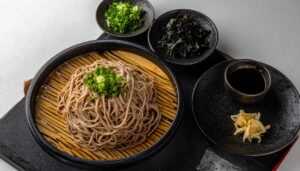
Izumo Soba (Shimane Prefecture)
It is made using a milling method called “hikigurumi,” in which whole buckwheat grains (buckwheat seeds with their husks still attached) are ground directly, giving it a dark color and a rich flavor and aroma.
The main ways to eat soba are “kakiko soba,” which is eaten by pouring condiments and soup over stacked bowls, and “kamaage soba,” which is served with the boiled soba noodles in the boiling broth.
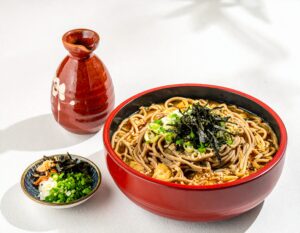
Wankosoba (Iwate Prefecture)
This is an all-you-can-eat soba restaurant where warm soba noodles are served in small bowls, and the waiter continuously adds small portions of soba noodles to the bowl.
Every time the bowl becomes empty, the waiter refills it with soba, so it is characteristic to see people eating soba one after another.
When your stomach is full, put the lid on the bowl. This is a signal to stop eating.
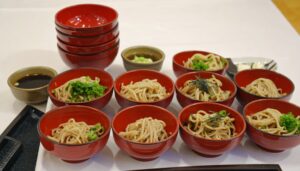
3. soba noodle making experience
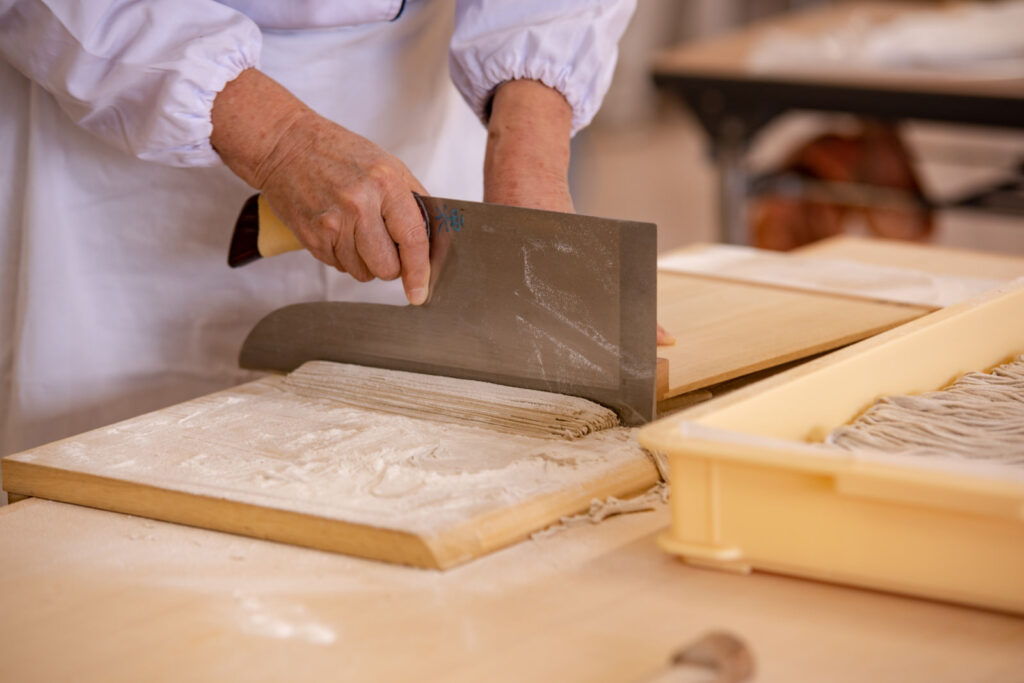
Recently, at tourist attractions and local events, "the Soba noodle making experience is gaining in popularity.
This culture allows you to experience the entire process of kneading buckwheat flour, stretching it, cutting it with a knife, and finishing it, A rare opportunity to experience the depth of soba and the preciousness of craftsmanship. and it's ready to serve.
More and more people are enjoying soba-noodle making at home, and there are a variety of tool sets and video explanations for beginners.
4. soba shop culture
There are many long-established soba restaurants throughout Japan. These include handmade soba and Edomae soba, Soba noodle restaurant where you can enjoy the authentic taste of buckwheat noodles is a favorite among locals and tourists alike.
Additionally, there is a unique style found only in soba restaurants called the “ Soba Mae ” culture.
This involves enjoying sake and light appetizers (such as sliced raw pork and chilled tofu) before eating soba, and has become established as a sophisticated adult way to enjoy the meal.
5. rituals and events and soba
Soba has also been valued as a food symbolizing human relationships and milestones. A typical example is the "buckwheat noodles after moving out".
When people move into a new house, they distribute buckwheat noodles to their neighbors, hoping for a long and thin relationship with them. The Meaning of Auspiciousness The custom is simplified in modern times, but it is still continued in some regions. Although it has been simplified in modern times, this custom is still practiced in some regions.
The basics of making and cooking soba noodles
The process of making soba noodles requires skilled craftsmanship, but once you understand the basic steps, you can try making them at home.
Here, we will briefly introduce the basic process of making handmade soba noodles.
Ingredients for soba noodles (serves 2-3)
- Buckwheat flour: 160g
- Flour: 40g
- Water: approx. 100 ml (adjust according to the season and the water absorption rate of the flour)
- Flour (buckwheat flour or wheat flour): appropriate amount
How to make it
1. Mix the flour.
- Mix the buckwheat flour and wheat flour evenly in a bowl.
- At this point, gently mix in air to make it easier to knead later.
2. Mixing water (mixing water into the flour)
- Gradually add water and gently mix with your fingertips.
- Next, once all the flour is evenly moistened and can be gathered together with your hands, it is ready.
- Too much water will make it sticky, and too little will make it powdery.
3. Kneading
- Remove the flour from the bowl and knead the dough on the countertop.
- Next, use the base of your hands to knead the dough back and forth until it becomes smooth.
- At this point, if it is elastic and has few cracks, it is complete.
4. Let the dough rest (optional)
- Wrap the dough in plastic wrap and let it sit for 10 to 20 minutes to allow the moisture to distribute evenly, making it easier to roll out.
5. Extend
- Sprinkle flour on the table and spread the dough into a circle.
- Use a rolling pin to roll out the dough from the center toward the edges until it is evenly thick (2-3 mm).
- Next, sprinkle flour moderately during the process to prevent the dough from sticking.
6. Fold and cut.
- Lightly fold the stretched dough (fold 4-5 times).
- Next, cut into uniform slices (about 2 mm thick) with a kitchen knife.
- After cutting, separate the noodles and sprinkle with flour to prevent them from sticking together.
7. Boil
- Boil plenty of water in a large pot.
- Add the noodles while stirring to separate them, and boil for 1-3 minutes (adjust according to thickness and preference).
- Once cooked, rinse thoroughly with cold water to remove any stickiness and firm up the noodles.
8. Plating
- For zaru soba: Place the noodles, which have been rinsed in cold water, in a colander and serve with soup (men-tsuyu) and condiments (green onions, wasabi, etc.).
- For kake soba: Pour hot broth over the noodles and add condiments.
Points
- Nihachi soba is easy to handle, and even beginners can make smooth noodles.
- Ten-gari soba is difficult to adjust the moisture content, so the trick is to add it little by little.
- The key to making delicious soba noodles with a firm texture is to boil them for the right amount of time and then rinse them thoroughly in cold water.

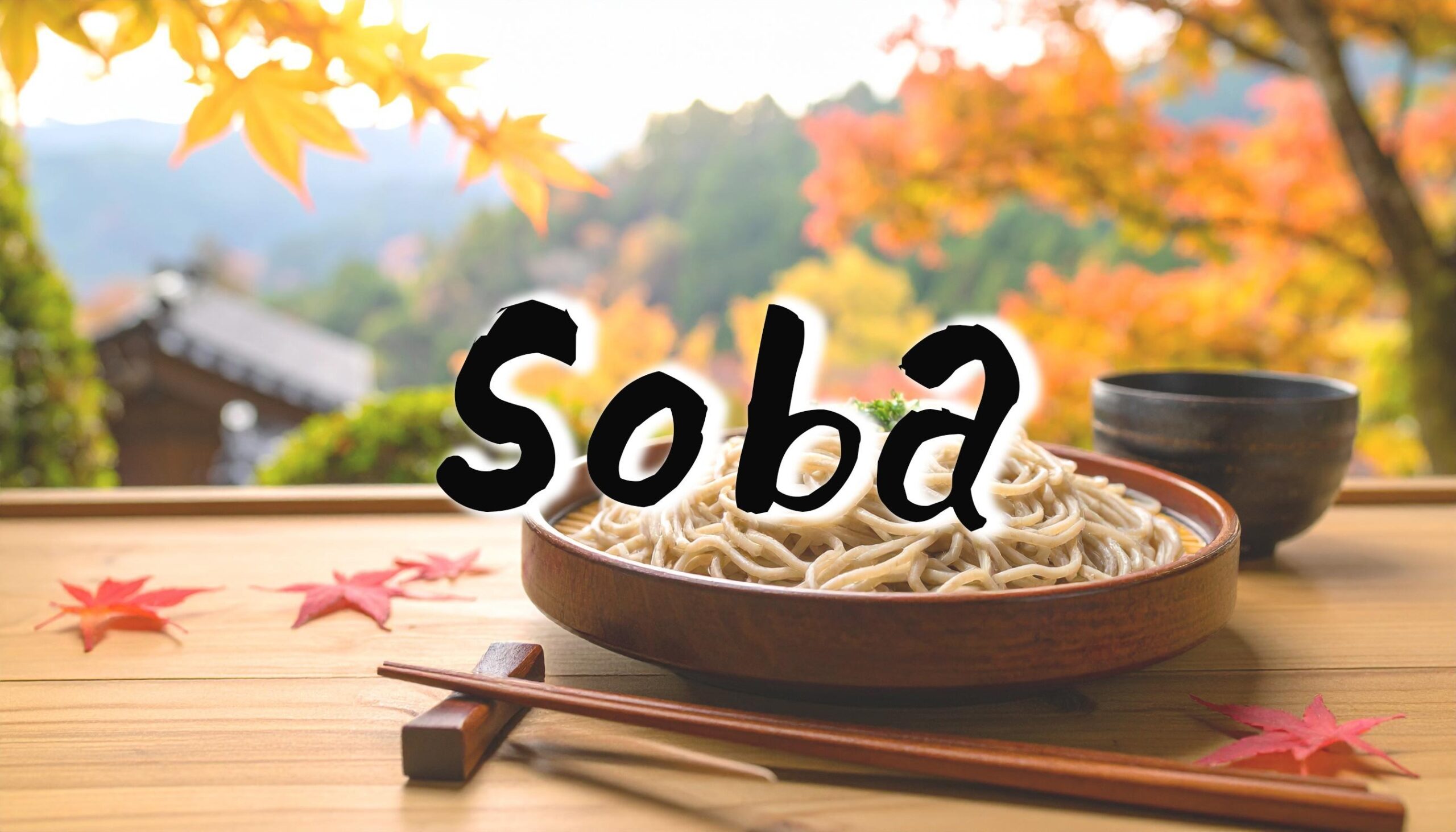


Comment